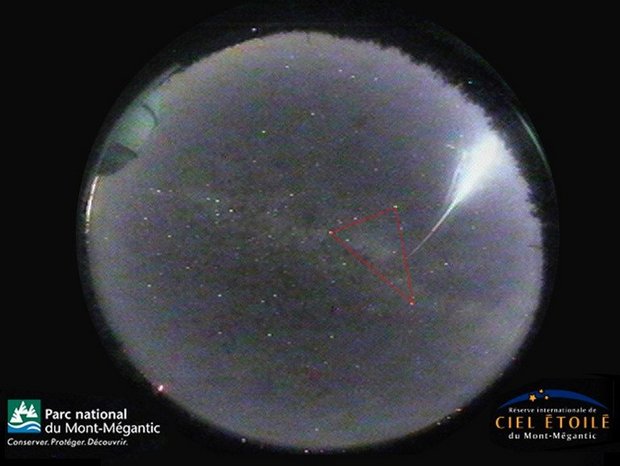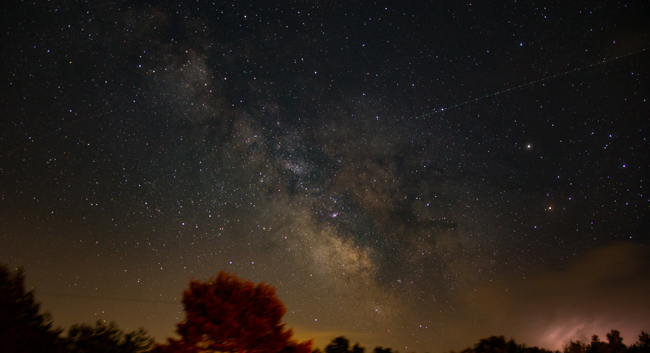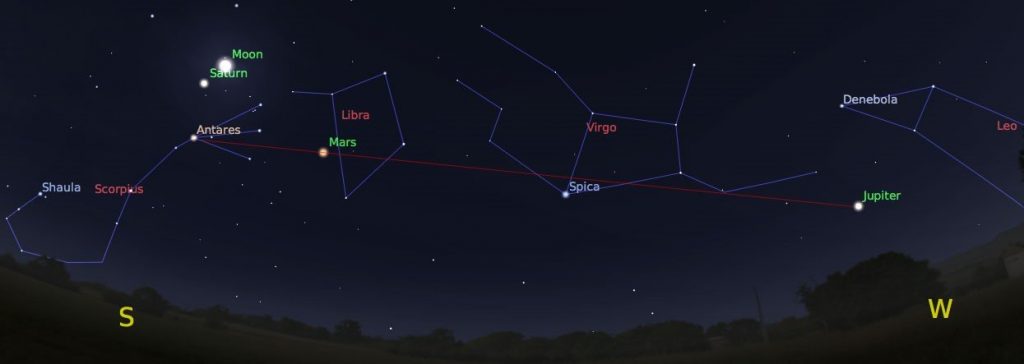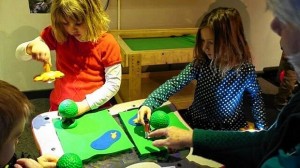Greetings, fellow astrophiles!
The latest article in the series, “Upstate NY stargazing in October: Prominent constellations of summer and winter visible on Autumn nights,” has just been posted to newyorkupstate.com and syracuse.com. This month, we look for globular clusters in Hercules, and follow the recent progress of Mars, Saturn, and Venus – all while getting early sights of the very best of winter – Orion, Taurus, and the Pleiades.
Direct Link: newyorkupstate.com/outdoors/2016/10/…nights_offer_some_of_the_best.html
Direct Link: http://www.syracuse.com/outdoors/index.ssf/…nights_offer_some_of_the_best.html

Caption: This photo, taken by a stationary camera at Mount Megantic National Park in Quebec, captured a fireball that shot over Montreal Wednesday night. The “bolide,” a rock entering Earth’s atmosphere, was seen across the Northeast. The Summer Triangle is shown as a red overlay. (ASTROLab du parc national du Mont-Megantic)
This article also marks the third official mention of our upcoming MOST/TACNY/CNYO hosting of International Observe The Moon Night on Saturday, October 8th. Additional details to follow, but expect the observing to happen somewhere around The MOST itself.
We’ll update the website and social media as we get a better idea on what the weather is supposed to do Saturday night (else we stay inside The MOST the entire time).




 The
The 






